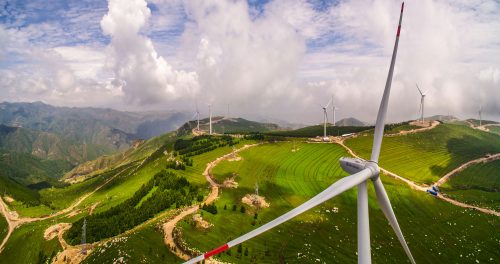China is the world’s largest emitter of climate pollution, responsible for more than a quarter of global emissions – if China doesn’t cut emissions, the whole world fails on climate change.
As China’s urbanization rate grew from 18 percent to 65 percent in 44 years, 1 million people moved to its cities every week. Considering that 70 percent of greenhouse gas emissions come from cities, how they are built in China today will strongly affect the world’s low carbon future.
The China Program provides technical insights to help the country’s policymakers improve China’s climate policy and reduce emissions across the power, transportation, buildings, and industrial sectors. Our team has published policy recommendations on China’s 14th Five-Year Plan, national emissions trading system, power system decarbonization plans, and sustainable urban design.
Energy Innovation has developed national and local China Energy Policy Simulator models to help identify the policies that can most efficiently reduce greenhouse gases and other health-harming pollution in China, and has established sustainable urban design principles in the book: “Emerald Cities: Planning for Smart and Green China.”

China
China is the world’s largest emitter of climate pollution, responsible for more than a quarter of global emissions – if China doesn’t cut emissions, the whole world fails on climate change. Burning fossil fuels in China impacts other nations, including the United States, through air pollution that crosses the Pacific Ocean and impacts communities, as well as worsening climate change impacts that threaten the global economy and global security.

China’s commitment to peak emissions before 2030 and achieve carbon neutrality by 2060 has prompted new national, sectoral, and local climate action plans. The United States-China agreement to work together on accelerating decarbonization this decade will be an instrumental avenue to boost cooperation and achieving the Paris Agreement’s goal of limiting warming to 1.5 degrees Celsius. But more work must be done so that China’s policymakers can implement effective policies that hasten decarbonization.
China is also rapidly urbanizing, with major repercussions for the global climate and human health. By 2030, one billion people—one out of every eight humans on Earth—will reside in China’s urban centers, so it’s imperative the nation designs low-carbon and sustainable cities. Although China has improved how it manages urbanization, many cities feature wide arterial roads and large neighborhood blocks, making personal vehicles the only reasonable form of transportation. This car-based development pattern has created dangerous air pollution and crippling traffic congestion.
Our Work
Energy Innovation’s work is squarely focused on providing technical expertise to inform China’s climate policies, improve their effectiveness, and accelerate the nation’s pollution reduction pace. China cutting its climate pollution benefits the world and the U.S.
 A “Four Zeros” strategy of a zero-carbon grid, zero-emission vehicles, zero net-energy buildings, and zero-carbon industry guides our work in China. In each of these four sectors, Energy Innovation collaborates with other program teams to provide technical support to the nation’s policymakers. For example, the China Program collaborates with EI’s Modeling and Analysis Program to develop national and local China EPS models to support Chinese policy development.
A “Four Zeros” strategy of a zero-carbon grid, zero-emission vehicles, zero net-energy buildings, and zero-carbon industry guides our work in China. In each of these four sectors, Energy Innovation collaborates with other program teams to provide technical support to the nation’s policymakers. For example, the China Program collaborates with EI’s Modeling and Analysis Program to develop national and local China EPS models to support Chinese policy development.
We also focus on developing low-carbon, livable cities using the principles from our book Emerald Cities: Planning for Smart and Green China, the first comprehensive manual detailing green building and sustainability practices for low-carbon city planning and construction. Our team works to design urban systems properly from the outset by equipping planners, mayors, developers, and other decision-makers with the tools needed to build cities that are livable, sustainable, and prosperous. At least a dozen new Chinese city developments have followed the principles.
